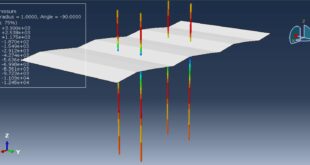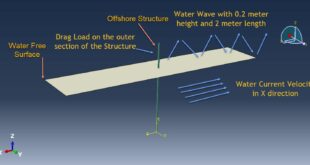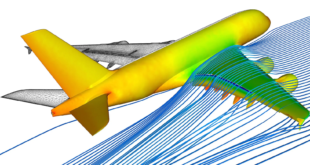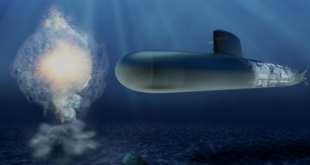In this tutorial, the Damage and crack identification in concrete by using piezoelectric material in Abaqus has been simulated. The concrete part with the initial crack is modeled as a three-dimensional solid part. The PZT parts are modeled as three-dimensional solid parts. You can see a figure of the assembled parts below
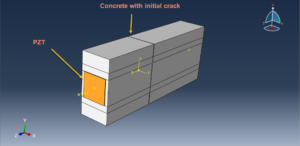
In recent years, structural health monitoring (SHM) employing embedded and permanent sensors has gained the attention of researchers in the aerospace, mechanical, and civil industries. Though SHM systems are in their early stages of development, they may be able to inspect large structures identify the existence of any structural damage, and characterize the location, type, severity, and even source (s) of damages. This can greatly help the end-user to minimize the costs associated with scheduled inspections and the repair grounding of the machine, and also improve the overall safety of the structure. Ultrasonic-guided waves, especially Lamb waves by using PZT, are widely acknowledged as an effective tool for the quantitative identification of damage in metallic and composite structures. Several studies have shown that guided waves can travel large distances in thin plate structures and have distinguishing characteristics such as transmission, reflection, scattering, and absorption of the acoustic energy for identifying damages including fatigue cracks and corrosion in metallic and composite structures
The PZT materials can be used to determine the crack length and location in many structures like concrete. In this tutorial, the concrete is modeled as an elastic material. To model PZT, the elastic, PZT matrix data, and dielectric properties are selected. The PZT material just can be used in the static or quasi-static solver and we can’t use that in the explicit step.
The proper steps and interactions are assigned to all parts. The load can be electrical potential, displacement, force, or pressure on the PZT surfaces. The proper mesh and boundaries are also applied to the parts
After the simulation, all results are available like stress, stress wave, crack length, and its location from the stress diagram and other results. You can see some figures for the results below
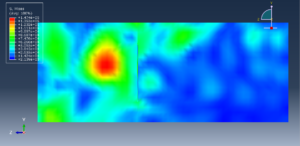
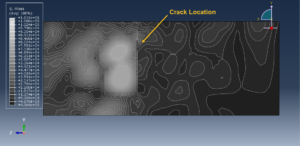
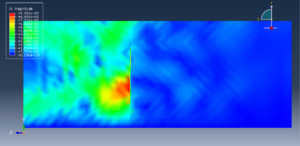
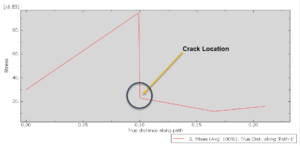
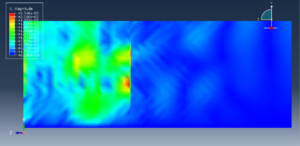
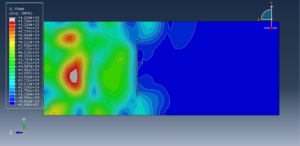
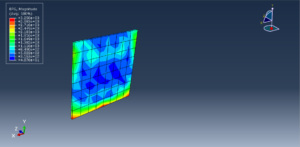
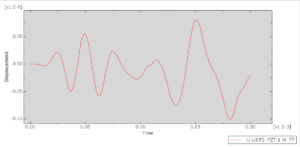
You can provide CAE, INP, and English video files of this simulation here. The cost of these files is Thirty Euros. you can click on the bellow bottom to begin the process
You can purchase the tutorial through a PayPal account, a Visa, or a Master card, just before payment, send me an email to this address: karampourp@gmail.com
 Abaqus tutorials Abaqus tutorials
Abaqus tutorials Abaqus tutorials
